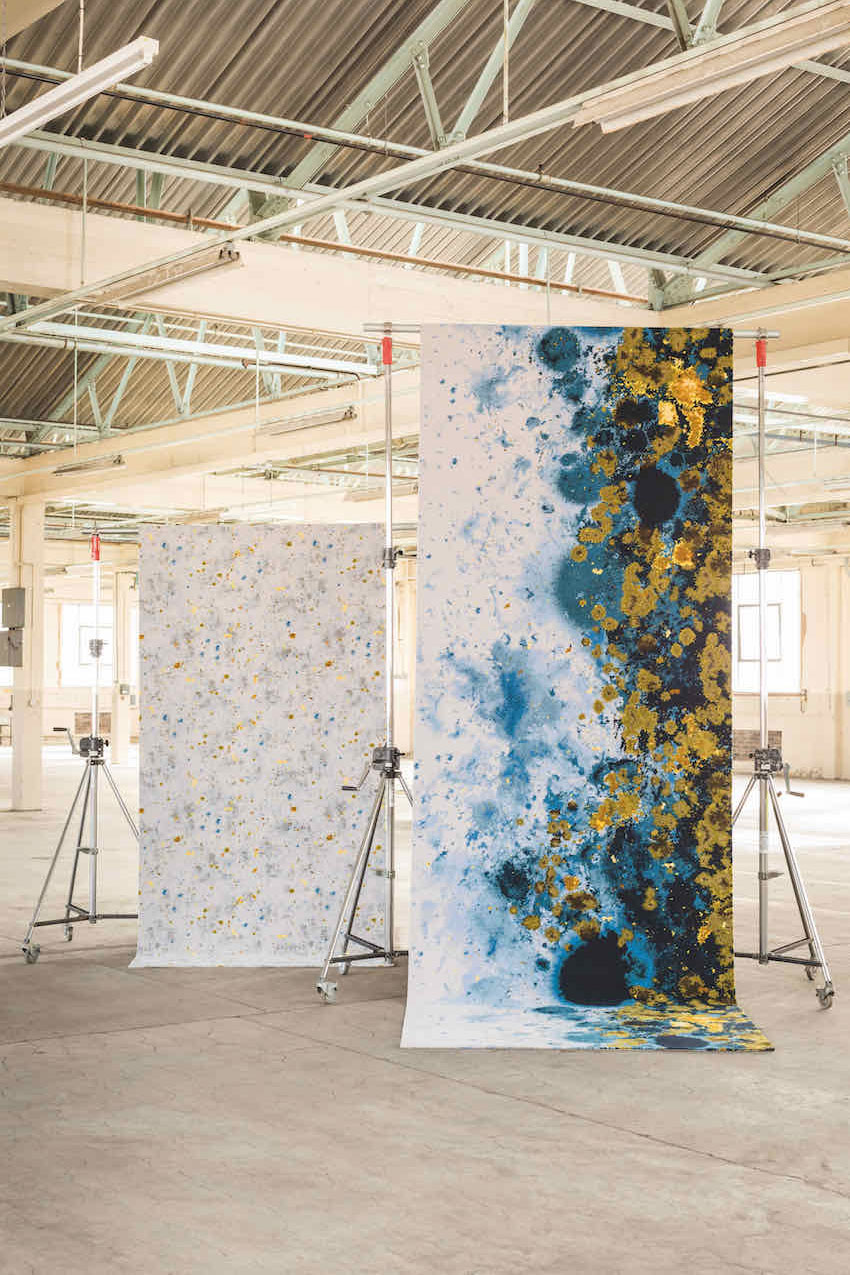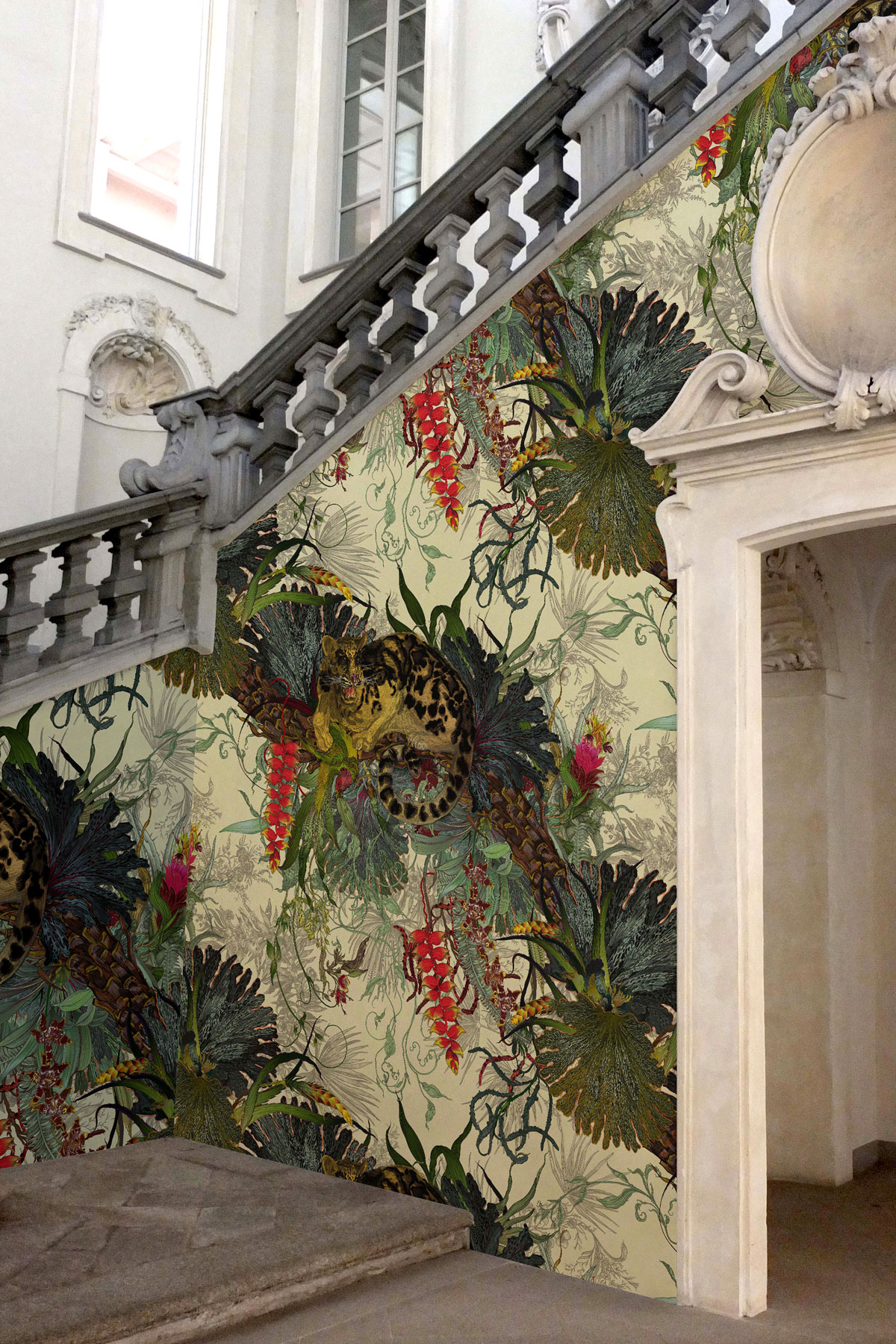Well, perhaps not entirely bad, more like cheeky, irreverent mischief-makers – when looking at one of their elaborate, large-scale patterns.

Take one of their city toiles, for instance (there’s Glasgow, Edinburgh, London and New York), where skyscrapers, muggers, homeless people and urban detritus replace the country scenes and promenading aristocrats of traditional 18th-century toiles de Jouy. Or an intricate botanical, such as Summer Trellis, which at first is all pretty pink flowers until closer inspection reveals thorny branches, bugs and bees.

Yet Paul and Ali would argue otherwise. ‘It’s not about doing it for the hell of it, it’s from a genuine love of those historical textiles and trying to bring what those toiles were doing at the time into our contemporary world,’ says Paul. ‘The original toiles were quite dark, so too the engravings from the natural history books that featured nasty things such as withered leaves, chewed on by moths. That’s far more interesting to us than some sort of swirly, pretty leaf. We love those little imperfections – it’s what we find interesting and beautiful.’

The pair founded Timorous Beasties, named after a line in the Robert Burns poem To a Mouse, straight out of finishing textile design degrees at The Glasgow School of Art in 1990. Today, they are based in a vast Victorian warehouse in west Glasgow and their patterned surfaces have been seen on everything from the walls of hotels such as Claridge’s to Nike trainers.

‘When we first started, everything was all grey and minimal, and interiors looked fantastic until you put a person in them,’ laughs Ali. Both talented illustrators but also passionate about the physical making process, they promptly set about shaking up the system, not just applying pattern to fabric and wallpaper but, over the years, also onto vinyl, cork, wooden veneer, ceramic, concrete, stone and metal.
A recent case in point is the company’s ongoing carpet collaboration with Brintons. ‘It’s a credit to Brintons’ weavers because we really challenged them to see how small and intricate they could go,’ says Ali of the most recent collection. ‘People look at them and can’t believe they’re woven, not printed.’

Exploring new technologies and materials has always fired Ali and Paul’s pattern making. Their recent Pinyin Tree design was inspired by ‘lots of ink lying around the studio, splattered onto the floor,’ says Ali. If you look closely, ‘you can see parts of the stem and foliage have been actually made by the large strokes of a mop,’ he enthuses.
The Livingetc newsletters are your inside source for what’s shaping interiors now - and what’s next. Discover trend forecasts, smart style ideas, and curated shopping inspiration that brings design to life. Subscribe today and stay ahead of the curve.
For last September’s London Design Festival, they worked with Bill Amberg to produce a five square-metre cow hide printed with Omni Drips, a pattern of splats, dribbles and marbling using old inks and wallpaper cores destined for the recycling bin.

They insist there are no rules when playing with pattern. ‘People say you can’t use a large pattern in a small room but that’s nonsense,’ say Ali. ‘Pattern humanises a space and changes its feel entirely. But at the end of the day, if it looks shit, you can take it off and buy something else. It might be a slightly expensive mistake, but it’s only pattern. There are plenty of other things to be more terrified of in life,’ he laughs.
‘But I guess our designs are very bold and do make a real statement,’ furthers Paul, ‘so we can understand why people tend to start off with one of our patterns just on one wall in the house or in the foyer of a hotel.’

Today, alongside the recent opening of The Shed, a trade-showroom-cum-gallery near the Timorous Beasties headquarters in Glasgow, the cult brand now has two shops in London and one soon to open in Berlin.
There is a forthcoming collaboration of fabrics and wallpapers with The Gainsborough Silk Weaving Company due to be launched in the autumn, bespoke upcycled antique chairs and stools, and a bedlinen collection is also in the pipeline. ‘We hope our patterns will wear into a home, a bit like a pair of denim jeans, ageing beautifully with time,’ says Paul.
timorousbeasties.com
Read about more interestingdesigners here.
The homes media brand for early adopters, Livingetc shines a spotlight on the now and the next in design, obsessively covering interior trends, color advice, stylish homeware and modern homes. Celebrating the intersection between fashion and interiors. it's the brand that makes and breaks trends and it draws on its network on leading international luminaries to bring you the very best insight and ideas.